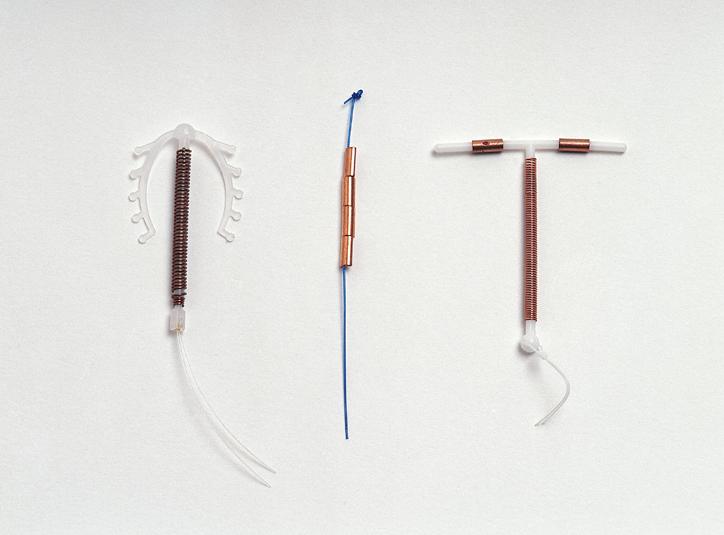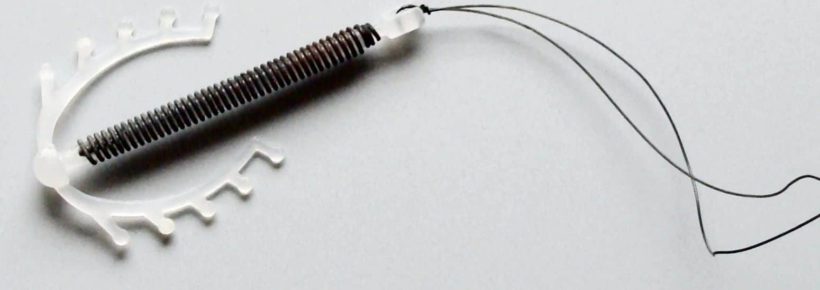An abortifacient “an agent (such as a drug) that induces abortion.” After an egg is fertilized, abortifacients kill the unborn child. However, manufactures often market these drugs under the name “contraception” to make them more appealing to consumers. Abortifacients are different from contraceptives in that they do not prevent an egg from being fertilized. Rather, they act after fertilization to kill a child in the earliest stages of development.
Many Contraceptives Are Really Abortifacients
In 1963, the United States Department of Health, Education and Welfare shared the widely held definition of abortion as “all the measures which impair the viability of the zygote at any time between the instant of fertilization and the completion of labor.” Indeed, until the mid-1960s, scientists universally acknowledged that human life begins at the moment of fertilization of the ovum by the sperm somewhere in the Fallopian tube.
In order to make abortion-causing methods more palatable in societies that still widely rejected abortion, and to circumvent laws designed to prohibit abortion, the promoters of birth control realized that they had to blur the line between conception-preventing (contraceptive) and early abortion-causing (abortifacient) actions. They did this by changing the definition of “conception” from fertilization (union of sperm and ovum) to implantation. Under the new definition of “conception,” if a device or drug―such as an IUD or hormonal contraception―prevents implantation, then no abortion takes place.
The “family planning” industry finally succeeded in 1965, when the American College of Obstetricians and Gynecologists published its first Terminology Bulletin, stating: “Conception is the implantation of a fertilized ovum.”1 It is important to note that this change in terminology was clearly not based upon new scientific findings but was a political decision to appease birth control activists.
Dr. J. Richard Sosnowski, head of the Southern Association of Obstetricians and Gynecologists, a member group of ACOG, acknowledged this nonscientific change almost two decades later:
I do not deem it excellent to play semantic gymnastics in a profession…. It is equally troublesome to me that, with no scientific evidence to validate the change, the definition of conception as the successful spermatic penetration of an ovum was redefined as the implantation of a fertilized ovum. It appears to me that the only reason for this was the dilemma produced by the possibility that the intrauterine contraceptive device might cause abortion.2
In other words, manufacturers of abortifacients call their products “contraceptives” not because they prevent conception but because they prevent implantation. Such methods are sometimes called “contragestions,” referring to those abortive products that either prevent a fertilized egg from attaching to the uterus, or otherwise dissolving it or expulsing it from the uterus. This terminology does not tell the truth, and it does not change the reality – that these methods are killing an unborn child.
As we shall see, this game of words is unscientific.
What Is True Contraception?
A true contraceptive method prevents conception in one or more of these ways:
- It places an actual mechanical barrier (such as a condom or cervical cap) between the sperm and ovum to prevent them from uniting.
- It thickens the cervical mucus, preventing the easy travel of sperm.
- It inhibits ovulation, preventing the release of a mature ovum.
- It blocks the Fallopian tube or vas deferens through sexual sterilization.
When effective, each of these methods prevents a new human being from being created.
What Is an Abortifacient?
Recall that an abortifacient is “an agent that induces an abortion.” Depending on the type of abortifacient, the abortion happens by preventing the implantation of the early human being (blastocyst) in the uterus or by killing the preborn child shortly after implantation.
There are two distinct kinds of abortifacients. The first includes drugs and devices that continually maintain a certain level of hormones in the woman’s body, mimicking pregnancy. While these can also have a genuine contraceptive effect, each also has the potential to alter the lining of the uterus (endometrium) to prevent the implantation of a tiny human being.
Methods that prevent implantation include:
- Oral contraceptives such as the birth control pill
- Intrauterine devices
- Injectables such as Depo-Provera
- Implants such as Norplant, Jadelle, Implanon, and Nexplanon
The second type of abortifacient directly kills an existing preborn child. Also referred to as “medical abortion,” these include:
- RU-486 (the “abortion pill”)
- The methotrexate/misoprostol combination
- “Emergency contraception”: These abortifacients have many forms and are sometimes called “morning-after pills.” They consist of high doses of the artificial steroids used in oral contraceptives. The most popular brand is Plan B.
The Input of Modern Science
Despite the birth control industry’s political victories in influencing the language of certain medical organizations, embryology (the field of science that specifically deals with the biological facts of the beginning of life) still holds that a new human being comes into existence at conception/fertilization.
Embryologists have found that from the first moment of creation, the new human being’s genetic code is complete, his sex is determined, and with proper nourishment in the womb he will continue to develop as every human being does. This is not a religious viewpoint; it is hard science.
There is also no scientific debate about the abortifacient effects of the drugs in question (though some drugs are still being tested), as preventing the tiny embryonic human being from implanting in the womb will certainly kill him. The manufacturers and promoters of these birth control methods, however, having largely won the debate over language, continue to market their products as “contraception.”
The patient inserts for all abortifacients are available online, and descriptions of how they operate to alter the endometrium are shown below. These products generally work to suppress ovulation and cause changes in the consistency of cervical mucus, making it more difficult for sperm to reach the ovum. These are true contraceptive effects.
However, as we have seen, these products also alter the uterine lining, making implantation much more difficult. In a cycle where ovulation was not prevented and fertilization takes place, a “silent abortion” will occur. Some examples of the way these “contraceptives” work are listed below:
- Depo-Provera “inhibits the secretion of gonadotropins which, in turn, prevents follicular maturation and ovulation and results in endometrial thinning.”
- Nexplanon uses hormones that “[stop] ovulation by preventing the release of an egg from the ovary; thins the lining of [the] uterus, which makes implantation of the egg more difficult; thickens mucus in the cervix, which makes it harder for the sperm to reach the egg.”
- Intrauterine Devices (such as Mirena): According to RX List, “Studies of Mirena and similar LNG IUS prototypes have suggested several mechanisms that prevent pregnancy: thickening of cervical mucus preventing passage of sperm into the uterus, inhibition of sperm capacitation or survival, and alteration of the endometrium.”
- NuvaRing contains “…2 types of female hormones – estrogen and progestin – which work together to prevent a pregnancy.” These two hormones prevent ovulation by stopping the luteinizing hormone (LH) and the follicle-stimulating hormone (FSH) from being produced. LH and FSH are essential in ovulation. By blocking LH and FSH, estrogen and progestin prevent ovulation, meaning there is no egg released. If, however, an egg is released and fertilized, these hormones also alter the uterine lining, thus making implantation difficult, if not impossible.
- Plan B Contraception: This “morning-after pill” works to prevent ovulation but can also prevent a baby from implanting in the uterus. According to the Polycarp Institute: “If both sperm and an egg are present and one does not see evidence of clinical pregnancy, then abortion is the most likely mechanism of action.”
- Yasmin “causes changes in [the] cervical mucus and uterine lining, making it harder for sperm to reach the uterus and harder for a fertilized egg to attach to the uterus.”
Abortifacients Harm the Mother
The patient information pamphlets for the above abortifacients reveal that, in addition to potentially causing an early abortion, they can harm the woman as well, as they can cause a variety of more than 80 side effects depending upon the method.

Contraception was destroying Violet’s soul, and her health. Backed by HLI donors, missionary Veronica (right) helped her choose openness to life.
These side effects come from a powerful group of chemicals called steroids and synthetic progestogens and progestins. There’s a huge range of potential side effects – everything from paralysis, toxic shock syndrome, ectopic pregnancy, stroke, blood clots, and heart attack, to the less serious hypertension, anemia, and varicose veins.
Some birth controls also increase the risk of cervical and breast cancers.
Side effects of hormonal birth control include nausea, breast changes, vaginal irritation, and mood changes.
You can read more about these side effects in our eight-page booklet that you can order from our store.
Risks of the Abortion Pill
Perhaps the most famous abortifacient is the abortion pill, also known as the mifepristone/misoprostol combination. Mifepristone works by blocking the hormone progesterone, which is necessary to continue a pregnancy. As a result, the newly formed baby is expelled from the uterus. This is often taken with misoprostol, which causes the uterus to contract and empty itself of the baby.
After the recent overturn of Roe v. Wade in 2022, the abortion pill has become increasingly difficult to acquire. More and more, women are being told they can take the pill at home – an incredibly dangerous suggestion.
Some side effects of RU-486 include:
- fever of 100.4 or higher
- severe bleeding
- cramping
- vision problems
- diarrhea
- severe nausea and vomiting
- severe pelvic pain
Help is Available
If you or someone you know is struggling with an unplanned pregnancy, rest assured that help is available. There are people who care about you and want what’s best for you. Pregnancy resource centers all across the nation offer help and support every day for women in crisis pregnancies.
This article was originally published in November 2021 and most recently updated in August 2023.
+ Endnotes
[1] American College of Obstetrics and Gynecology, Terminology Bulletin, “Terms Used in Reference to the Fetus,” Chicago: ACOG, September 1965.
[2] J. Richard Sosnowski, MD, “The Pursuit of Excellence: Have We Apprehended and Comprehended It?” American Journal of Obstetrics and Gynecology, September 15, 1984, page 117.
Related Content
HLI staff writers bring you stories from the mission field and the latest information on life and family issues. All HLI articles are true to Catholic teaching.















What about the Birth Control Patch? Where does this fall between the abortifacient vs contraceptive categories? Does the patch prevent implantation?
So is there a method of birth control that is ok to use? Going by this article every method of birth control besides condoms and pulling out are bad.
Ken, thanks for raising the question. Rather than provide a summary here, please permit me to direct you to two articles on our website. The first gives the Catholic Church’s teaching on contraception: https://www.hli.org/resources/historical-church-teaching-contraception/ and the second explains Natural Family Planning (NFP), which is often misunderstood and confused with contraception: https://www.hli.org/resources/contraception-vs-nfp-hli-educational-series/. If you have particular questions, please also feel free to reach out to us by email at hli@hli.org.
Do we have any statistics or guesses on how many abortions happen in a year due to abortifacients?
Sean, great question. Using formulas based on the way the birth control pill works, pharmacy experts project that about 14 million chemical abortions occur in the United States each year.
What current, 2019-based study is there regarding birth control pills are still abortifacients?
We would refer you to the patient information pamphlets for every method at the National Institute for Health’s DailyMed website at http://dailymed.nlm.nih.gov/dailymed/. All of the standard patient information pamphlets has in paragraph 12.1, “Clinical Pharmacology: Mechanism of action,” stating that all the hormonal methods prevent implantation as one of the three mechanisms of action.
I am the host of From the Median, http://www.fromthemedian.org , a 5 night a week prolife radio program that airs in Ohio, Michigan and Virginia. The program format is four 10-minute segments. I would like to interview someone about this excellent article and wondered if you could help me set this up. I pre-record the program and usually record on Monday and Wednesday mornings. However I can be somewhat flexible with my schedule.
Thank you for your assistance.